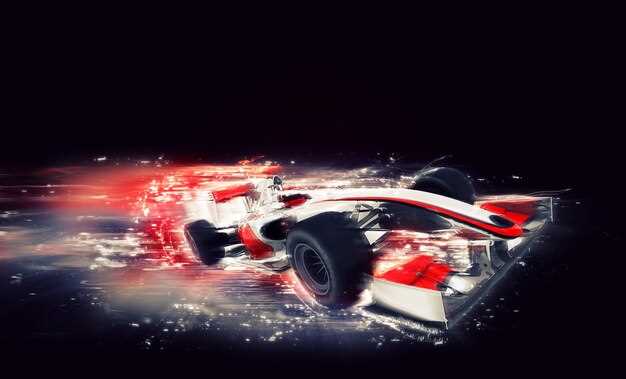
The Porsche 911 RSR has etched its name into the annals of GT racing history, symbolizing performance, elegance, and a relentless pursuit of victory. Since its debut, the RSR has not only dominated various championships but has also set a benchmark for what a modern race car should embody. The fusion of advanced engineering and racetrack prowess makes the 911 RSR a true powerhouse in the world of GT racing.
With its distinctive design and innovative technology, the 911 RSR showcases Porsche’s commitment to excellence. The model leverages a rear-engine layout, paired with a robust racing chassis, allowing it to tackle a variety of circuits with ease. This combination has proven to be a game changer, enabling the RSR to outperform its competitors consistently and secure numerous titles across global racing events.
As GT racing continues to evolve, the Porsche 911 RSR remains at the forefront, captivating fans and challenging rival teams. Its success stories are not just tales of victories; they are reflections of a legacy built on engineering precision, teamwork, and an unwavering drive to push the limits of speed. The 911 RSR is not merely a car; it’s a testament to what can be achieved when passion meets innovation in the world of GT racing.
Performance Specifications That Define the 911 RSR
The Porsche 911 RSR stands as a pinnacle of engineering excellence in gt racing, showcasing a combination of power, agility, and precision. Equipped with a 4.2-liter flat-six engine, the RSR delivers an impressive output of approximately 510 horsepower. This power is harnessed through a rear-mounted six-speed sequential transmission, enabling rapid gear shifts and optimal control on the racetrack.
With its lightweight construction, the 911 RSR boasts a weight-to-power ratio that enhances its performance metrics. Utilizing a mix of carbon-fiber reinforced materials and a stripped-down chassis, the car weighs around 1,243 kilograms, contributing to its remarkable acceleration and maneuverability. The aerodynamic design is meticulously crafted to reduce drag while enhancing downforce, allowing the RSR to maintain stability at high speeds.
In terms of handling, the 911 RSR features a sophisticated suspension system with double wishbones at the front and a multi-link setup at the rear. This configuration ensures superior road grip and responsiveness, essential traits for competitive gt racing. Additionally, the car is equipped with a state-of-the-art braking system, featuring carbon-carbon brake discs that provide exceptional stopping power in high-performance conditions.
The evolutionary advancements in the 911 RSR include continuous refinements from the Porsche Motorsport team, ensuring that each model not only adheres to FIA regulations but also meets the demands of elite racing environments. The balance of power, agility, and cutting-edge technology firmly establishes the Porsche 911 RSR as a powerhouse in the realm of gt racing success.
Strategies for Maximizing Porsche 911 RSR Race Results

To achieve optimal performance in GT racing, teams must focus on several key strategies tailored specifically for the Porsche 911 RSR. Firstly, meticulous preparation of the vehicle is crucial. This includes regular maintenance checks, ensuring that all components are in top condition and any wear is addressed. Weight reduction through careful selection of materials can significantly enhance speed and agility on the track.
Secondly, data analysis plays a vital role in maximizing race results. Utilizing telemetry systems allows teams to gather real-time data on vehicle performance, including tire wear, fuel consumption, and handling characteristics. Analyzing this data pre-race and post-race can lead to informed adjustments to setups, ensuring the 911 RSR is optimized for each specific circuit.
Thirdly, effective communication between drivers and engineers is essential. Drivers should provide detailed feedback about the handling and performance of the Porsche 911 RSR during practice sessions. This information aids engineers in making critical adjustments to suspension settings and aerodynamics to improve lap times.
Additionally, tire management is a fundamental aspect of GT racing strategy. Selecting the right compound and tire pressure for each race condition allows the Porsche 911 RSR to maintain optimal grip and performance throughout the race. Stint planning, including understanding when to change tires, can provide a competitive edge over rivals.
Lastly, strategic race planning and understanding of track dynamics can significantly influence results. Teams should study the racing line, overtaking opportunities, and potential hazards to devise a comprehensive race strategy. Incorporating these elements ensures that the Porsche 911 RSR can perform consistently and effectively against competing GT vehicles throughout the race.
Comparative Analysis: 911 RSR vs. Other GT Racing Competitors

The Porsche 911 RSR stands as a formidable contender in the realm of GT racing, renowned for its engineering excellence and performance capabilities. Compared to its rivals, the 911 RSR showcases a unique blend of power, agility, and handling that sets it apart from competitors such as the Ferrari 488 GTE and Ford GT.
One of the standout features of the 911 RSR is its rear-engine layout, which provides exceptional weight distribution and stability during high-speed cornering. This architectural advantage allows the 911 RSR to maintain grip on tight circuits, unlike some front-engine competitors that may experience traction loss during aggressive maneuvers. The 911 RSR’s aerodynamic design further enhances its performance, making it particularly effective in endurance racing scenarios.
When comparing performance metrics, the 911 RSR consistently demonstrates superior acceleration and braking capabilities. It typically achieves faster lap times due to its power output and refined suspension system, which is optimized for the rigors of GT racing. In contrast, while the Ferrari 488 GTE offers strong competition, its handling characteristics can often vary under different track conditions, making it less predictable than the RSR.
Moreover, the 911 RSR has proven its mettle in various international competitions, including the FIA World Endurance Championship and the 24 Hours of Le Mans. Its track record speaks volumes, as it has secured numerous victories against rivals that have included Aston Martin Vantage and Lamborghini Huracán GT3 models. The historical success of the 911 RSR in these prestigious events solidifies its reputation as a powerhouse in the GT racing landscape.
In terms of driver feedback, the Porsche 911 RSR has garnered appreciation for its user-friendly interface and responsive handling. Drivers often cite the car’s simplicity and predictability, which inspire confidence and allow them to push past their limits. In contrast, some competitors, while offering raw power, may require a more nuanced driving style, which can be a disadvantage under competitive conditions.
Ultimately, the comparative analysis reveals that the 911 RSR not only meets but often exceeds the challenges posed by other GT racing vehicles. Its well-rounded capabilities, historical prowess, and consistent performance ensure that it remains a top choice for teams aiming for success in the competitive GT racing circuit.
 Skip to content
Skip to content




